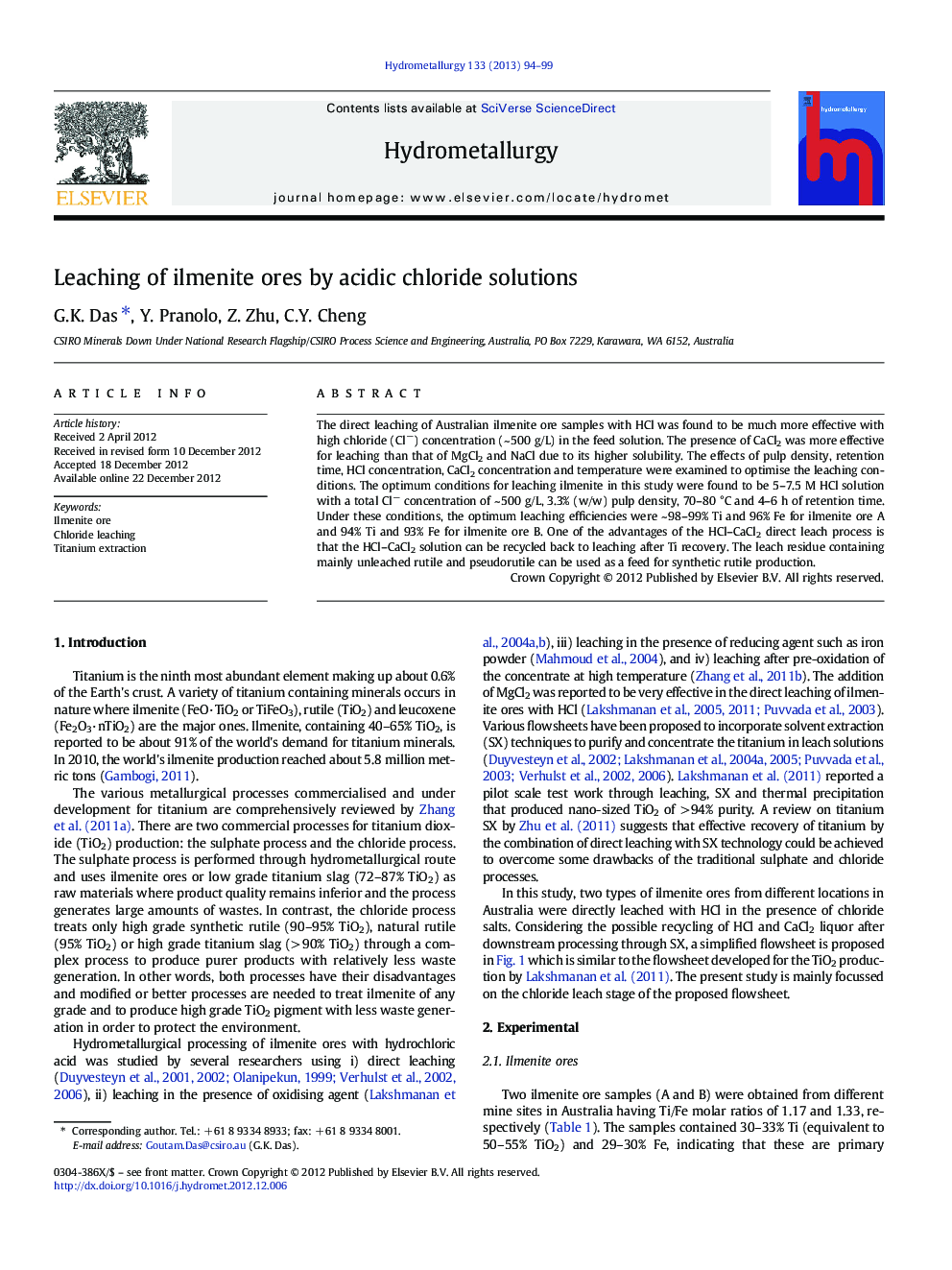| Article ID | Journal | Published Year | Pages | File Type |
|---|---|---|---|---|
| 212366 | Hydrometallurgy | 2013 | 6 Pages |
The direct leaching of Australian ilmenite ore samples with HCl was found to be much more effective with high chloride (Cl−) concentration (~ 500 g/L) in the feed solution. The presence of CaCl2 was more effective for leaching than that of MgCl2 and NaCl due to its higher solubility. The effects of pulp density, retention time, HCl concentration, CaCl2 concentration and temperature were examined to optimise the leaching conditions. The optimum conditions for leaching ilmenite in this study were found to be 5–7.5 M HCl solution with a total Cl− concentration of ~ 500 g/L, 3.3% (w/w) pulp density, 70–80 °C and 4–6 h of retention time. Under these conditions, the optimum leaching efficiencies were ~ 98–99% Ti and 96% Fe for ilmenite ore A and 94% Ti and 93% Fe for ilmenite ore B. One of the advantages of the HCl–CaCl2 direct leach process is that the HCl–CaCl2 solution can be recycled back to leaching after Ti recovery. The leach residue containing mainly unleached rutile and pseudorutile can be used as a feed for synthetic rutile production.
► HCl leaching of ilmenite ore was found to be very effective in high chloride solution. ► Optimised leaching were at 5-7.5 M HCl with a total Cl of 500g/L, 3.3% pd, 70°C, 4-6h. ► Ti and Fe leaching were ~99% and 96% for ore A and 94% and 93% for ore B respectively.
